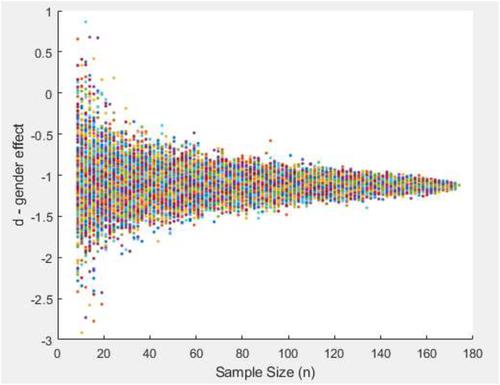当前位置:
X-MOL 学术
›
Int. J. Dev. Neurosci.
›
论文详情
Our official English website, www.x-mol.net, welcomes your
feedback! (Note: you will need to create a separate account there.)
Hold-out validation for the assessment of stability and reliability of multivariable regression demonstrated with magnetic resonance imaging of patients with schizophrenia
International Journal of Developmental Neuroscience ( IF 1.7 ) Pub Date : 2021-07-26 , DOI: 10.1002/jdn.10144 Jacob Levman 1, 2 , Maxwell Jennings 1, 3 , Priya Kabaria 4 , Ethan Rouse 1 , Masahito Nangaku 4 , Derek Berger 1 , Iker Gondra 1 , Emi Takahashi 4 , Pascal Tyrrell 5, 6, 7
International Journal of Developmental Neuroscience ( IF 1.7 ) Pub Date : 2021-07-26 , DOI: 10.1002/jdn.10144 Jacob Levman 1, 2 , Maxwell Jennings 1, 3 , Priya Kabaria 4 , Ethan Rouse 1 , Masahito Nangaku 4 , Derek Berger 1 , Iker Gondra 1 , Emi Takahashi 4 , Pascal Tyrrell 5, 6, 7
Affiliation

|
Neuroscience studies are very often tasked with identifying measurable differences between two groups of subjects, typically one group with a pathological condition and one group representing control subjects. It is often expected that the measurements acquired for comparing groups are also affected by a variety of additional patient characteristics such as sex, age, and comorbidities. Multivariable regression (MVR) is a statistical analysis technique commonly employed in neuroscience studies to “control for” or “adjust for” secondary effects (such as sex, age, and comorbidities) in order to ensure that the main study findings are focused on actual differences between the groups of interest associated with the condition under investigation. It is common practice in the neuroscience literature to utilize MVR to control for secondary effects; however, at present, it is not typically possible to assess whether the MVR adjustments correct for more error than they introduce. In common neuroscience practice, MVR models are not validated and no attempt to characterize deficiencies in the MVR model is made. In this article, we demonstrate how standard hold-out validation techniques (commonly used in machine learning analyses) that involve repeatedly randomly dividing datasets into training and testing samples can be adapted to the assessment of stability and reliability of MVR models with a publicly available neurological magnetic resonance imaging (MRI) dataset of patients with schizophrenia. Results demonstrate that MVR can introduce measurement error up to 30.06% and, on average across all considered measurements, introduce 9.84% error on this dataset. When hold-out validated MVR does not agree with the results of the standard use of MVR, the use of MVR in the given application is unstable. Thus, this paper helps evaluate the extent to which the simplistic use of MVR introduces study error in neuroscientific analyses with an analysis of patients with schizophrenia.
中文翻译:

对精神分裂症患者磁共振成像所证明的多变量回归稳定性和可靠性评估的保留验证
神经科学研究通常的任务是确定两组受试者之间的可测量差异,通常是一组患有病理状况,另一组代表对照组。通常预计,用于比较组的测量值也会受到各种其他患者特征的影响,例如性别、年龄和合并症。多变量回归 (MVR) 是神经科学研究中常用的一种统计分析技术,用于“控制”或“调整”次要影响(如性别、年龄和合并症),以确保主要研究结果集中在实际与所调查的疾病相关的利益群体之间的差异。神经科学文献中的常见做法是利用 MVR 来控制次要效应。然而,目前,通常无法评估 MVR 调整是否纠正了比它们引入的更多错误。在常见的神经科学实践中,MVR 模型没有经过验证,也没有尝试描述 MVR 模型中的缺陷。在本文中,我们展示了标准的保持验证技术(通常用于机器学习分析)如何将数据集反复随机划分为训练和测试样本,以适应具有公开可用的神经学模型的 MVR 模型的稳定性和可靠性评估。精神分裂症患者的磁共振成像(MRI)数据集。结果表明,MVR 可以引入高达 30.06% 的测量误差,并且在所有考虑的测量中平均会在该数据集上引入 9.84% 的误差。当保留验证的 MVR 与 MVR 的标准使用结果不一致时,MVR 在给定应用程序中的使用是不稳定的。因此,本文通过对精神分裂症患者的分析,有助于评估 MVR 的简单使用在神经科学分析中引入研究错误的程度。
更新日期:2021-07-26
中文翻译:

对精神分裂症患者磁共振成像所证明的多变量回归稳定性和可靠性评估的保留验证
神经科学研究通常的任务是确定两组受试者之间的可测量差异,通常是一组患有病理状况,另一组代表对照组。通常预计,用于比较组的测量值也会受到各种其他患者特征的影响,例如性别、年龄和合并症。多变量回归 (MVR) 是神经科学研究中常用的一种统计分析技术,用于“控制”或“调整”次要影响(如性别、年龄和合并症),以确保主要研究结果集中在实际与所调查的疾病相关的利益群体之间的差异。神经科学文献中的常见做法是利用 MVR 来控制次要效应。然而,目前,通常无法评估 MVR 调整是否纠正了比它们引入的更多错误。在常见的神经科学实践中,MVR 模型没有经过验证,也没有尝试描述 MVR 模型中的缺陷。在本文中,我们展示了标准的保持验证技术(通常用于机器学习分析)如何将数据集反复随机划分为训练和测试样本,以适应具有公开可用的神经学模型的 MVR 模型的稳定性和可靠性评估。精神分裂症患者的磁共振成像(MRI)数据集。结果表明,MVR 可以引入高达 30.06% 的测量误差,并且在所有考虑的测量中平均会在该数据集上引入 9.84% 的误差。当保留验证的 MVR 与 MVR 的标准使用结果不一致时,MVR 在给定应用程序中的使用是不稳定的。因此,本文通过对精神分裂症患者的分析,有助于评估 MVR 的简单使用在神经科学分析中引入研究错误的程度。











































 京公网安备 11010802027423号
京公网安备 11010802027423号